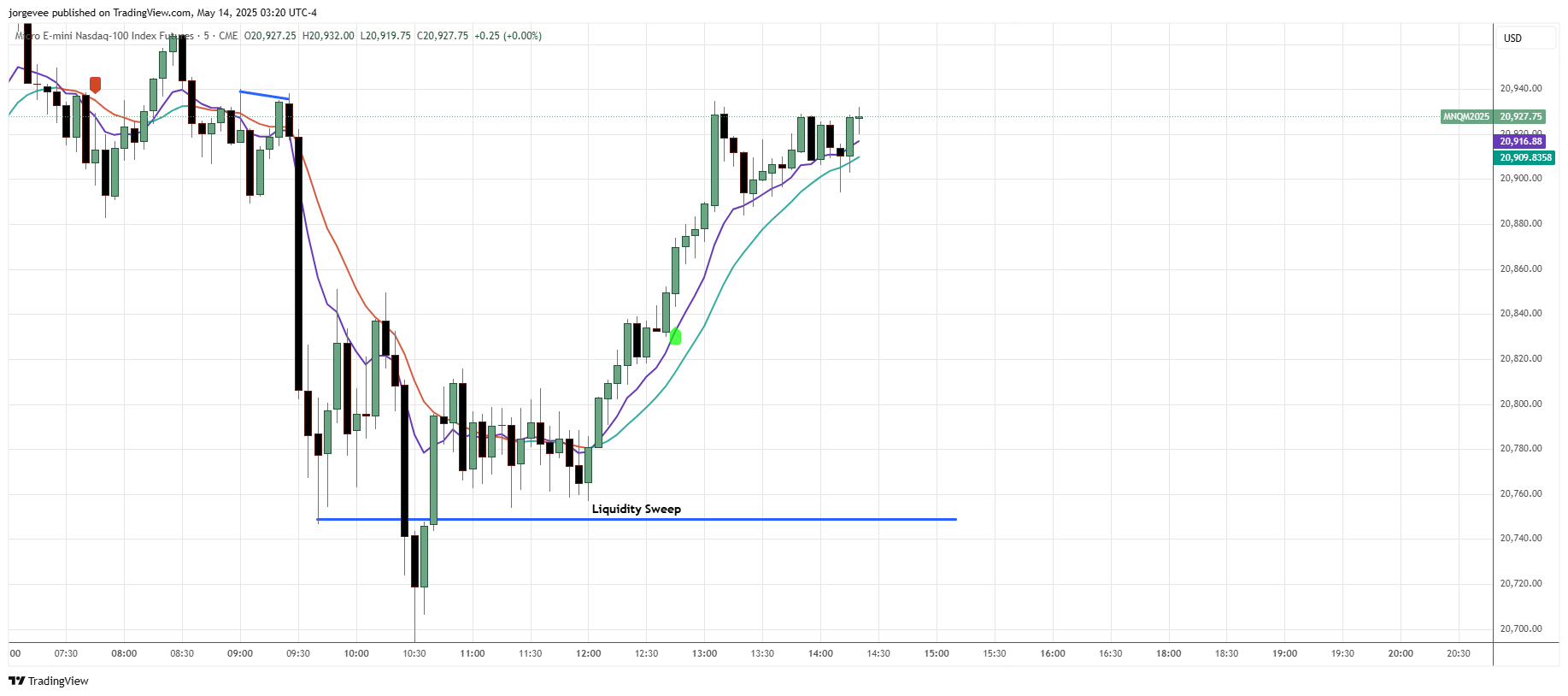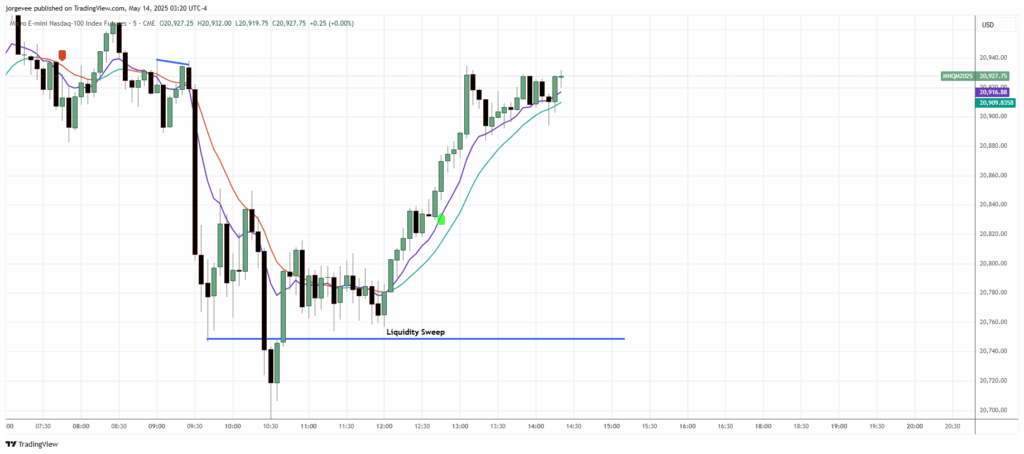
May 13, 2025
How Smart Money Use Liquidity Sweeps to Their Advantage
You’re likely encountering many new terms and concepts, throughout your trading journey. One such concept, often discussed in the context of “Smart Money” or institutional trading, is the liquidity sweep. Understanding what liquidity sweeps are and why they occur can offer valuable insights into market dynamics. While it might sound complex, the core idea is relatively straightforward and crucial for navigating the markets more effectively. This article aims to demystify liquidity sweeps, explaining in simple terms how large financial institutions might use them and why this knowledge can be beneficial for you, even as you’re starting your trading journey. We’ll explore the “why” behind these market movements, helping you build a foundational understanding of a tactic that significantly influences price action across various financial markets. Our goal is not to provide a foolproof trading strategy, but to equip you with knowledge that can enhance your market awareness and analytical skills.
Understanding Liquidity: The Lifeblood of the Market
Before we dive deeper into liquidity sweeps, it’s essential to grasp the concept of liquidity itself. In the simplest terms, liquidity refers to how easily an asset can be bought or sold in the market without causing a significant change in its price. Think of it like water flowing in a river; a highly liquid market is like a wide, deep river where large volumes can move smoothly. Conversely, an illiquid market is like a shallow, narrow stream where even small movements can cause big ripples. High liquidity is generally desirable because it means there are many buyers and sellers actively participating. This activity ensures that if you want to buy an asset, there’s likely someone ready to sell it at a fair price, and if you want to sell, there’s likely a buyer available. This ease of transaction is what keeps markets functioning efficiently. For beginner traders, understanding where liquidity tends to accumulate on a price chart is a key step towards comprehending more advanced concepts like liquidity sweeps. These areas often act as magnets for price, and knowing this can provide context for why the market moves in certain ways.

How Institutions Operate: A Glimpse into “Smart Money”
In the trading world, you’ll often hear the term “Smart Money.” This generally refers to large financial institutions, hedge funds, investment banks, and other professional traders who command significant capital and resources. Unlike individual retail traders, these institutions often need to execute very large orders. Placing such substantial orders directly into the market without careful planning could drastically move the price against them, leading to unfavorable entry or exit points. Therefore, these large players employ sophisticated strategies to accumulate or distribute their positions with minimal market impact. They have access to advanced analytical tools, extensive research, and teams of experienced professionals. Understanding that these large entities operate with different objectives and constraints than retail traders is crucial. Their actions can create significant market movements, and liquidity sweeps are one of the tactics attributed to them as they seek out areas of concentrated orders to facilitate their large transactions. For a beginner, it’s less about trying to perfectly emulate these institutions and more about being aware of their potential influence on market dynamics.
The Mechanics of a Liquidity Sweep: What Actually Happens?
Now that we understand liquidity and the role of institutions, let’s explore the mechanics of a liquidity sweep. Imagine a scenario where the price of an asset has been moving within a certain range. Many traders, anticipating a breakout, might place their stop-loss orders just above a recent high (if they are short) or just below a recent low (if they are long). Similarly, traders looking to enter on a breakout might place pending buy orders above the high or pending sell orders below the low. These clusters of orders create what are known as liquidity pools or liquidity zones.
A liquidity sweep occurs when the price makes a sharp, often quick, move into one of these liquidity zones. This move is designed to trigger those concentrated stop-loss orders and pending entry orders. For instance, if there’s a significant pool of stop-loss orders from short sellers just above a key resistance level, a liquidity sweep might involve the price briefly spiking above that resistance. This spike triggers the stop-losses (which are buy orders), providing the necessary buy-side liquidity for large institutions that might be looking to sell a large position without causing the price to plummet too quickly. Conversely, a sweep below a support level can trigger stop-losses from long positions (which are sell orders), providing sell-side liquidity for institutions looking to buy. After the sweep, the price often reverses, leaving those who were caught in the sweep on the wrong side of the market. This is why sweeps are sometimes referred to as “stop hunts” – they appear to hunt for and trigger stop orders.
Why Institutions Use Sweeps: The Strategic Advantage
Understanding why large institutions might engage in liquidity sweeps is key to appreciating their significance. As mentioned, these entities often need to move substantial volumes of an asset. If they were to simply place a massive buy or sell order on the market, it would likely cause a sharp price movement against their desired entry or exit point, a phenomenon known as slippage. This would mean buying at higher prices or selling at lower prices than intended, significantly impacting their overall profitability. Liquidity sweeps offer a way to mitigate this. By pushing the price into areas where they know a high concentration of orders (like stop-losses) exists, they can trigger these orders, creating a temporary surge in available liquidity. For example, if an institution wants to sell a large block of shares without crashing the price, they might first engineer a small upward price movement to trigger the buy-stop orders of short-sellers and the buy-limit orders of breakout traders. This sudden influx of buying interest provides the counterparty liquidity they need to offload their shares at a more stable price. Essentially, sweeps allow institutions to enter or exit large positions more efficiently, with less adverse price impact, by tapping into the collective orders of other market participants, often retail traders. It’s a strategic maneuver to find sufficient buyers when they want to sell, or sufficient sellers when they want to buy, in a concentrated burst.
Identifying Potential Liquidity Sweeps: Tips for Beginners
For beginner traders, trying to precisely predict or trade liquidity sweeps can be very challenging and risky. It’s more about developing an awareness of where they might occur to better understand price action. One common area to watch is around obvious swing highs and swing lows on your chart. These are the clear peaks and troughs that stand out. Many traders place stop-loss orders just beyond these points. Similarly, areas of equal highs or equal lows, where the price has touched a similar level multiple times and reversed, can also accumulate a significant number of orders. Another concept to be aware of is support and resistance levels. These are price zones where the market has historically struggled to break through. Orders often cluster around these levels. When you see the price approaching such a key level, and then suddenly accelerating through it only to quickly reverse, it could be indicative of a liquidity sweep. However, it’s crucial to remember that not every break of a key level followed by a reversal is a liquidity sweep orchestrated by institutions. Markets are complex, and many factors influence price. As a beginner, focus on observing these patterns and understanding the potential for sweeps, rather than trying to actively trade them without a robust, well-tested strategy and solid risk management. Consider it part of your broader market education.
Risks and Considerations for Beginners: Trade with Caution
While understanding liquidity sweeps can be enlightening, it’s vital for beginner traders to approach this concept with a healthy dose of caution. Attempting to trade based on anticipated liquidity sweeps without a deep understanding, a well-defined strategy, and robust risk management can be a quick way to incur losses. The market movements during a sweep can be very fast and volatile, making it easy to get caught on the wrong side. Remember, what might look like a liquidity sweep could also be the beginning of a genuine breakout or a continuation of a strong trend. Misinterpreting these moves is a common pitfall. Furthermore, trying to trade against perceived institutional flow is generally not advisable for beginners, as institutions have far greater resources and market influence. The primary benefit of learning about liquidity sweeps as a novice is to enhance your market awareness, to understand why prices might suddenly spike and reverse around key levels, and to be more mindful of where you place your own stop-loss orders. It’s about adding another layer to your analytical toolkit, not about finding a shortcut to guaranteed profits. Always prioritize capital preservation, continuous learning, and practicing with a demo account before risking real money on complex concepts.
Conclusion: Knowledge is Power in Your Trading Journey
Understanding the concept of liquidity sweeps, and the broader idea of how institutional players or “Smart Money” might operate, is a valuable piece of knowledge for any aspiring trader. It helps to explain some of the sharp, seemingly counter-intuitive price movements that can occur, especially around significant chart levels. For beginner traders, the key takeaway is not to try and outsmart these large players or to perfectly predict every sweep, as this is an incredibly difficult and risky endeavor. Instead, the aim is to build a more nuanced understanding of market dynamics. Recognizing that liquidity is a driving force and that large orders require substantial liquidity to be filled can provide context to price action that might otherwise seem random. This awareness can help you become more cautious about where you place your orders, more critical of simple breakout strategies without confirmation, and more appreciative of the complexities of the market. Continue to learn, observe, and practice. The more you understand about the different forces at play, the better equipped you will be to make informed decisions in your trading journey. Remember that patience, continuous education, and disciplined risk management are the cornerstones of long-term success in trading.